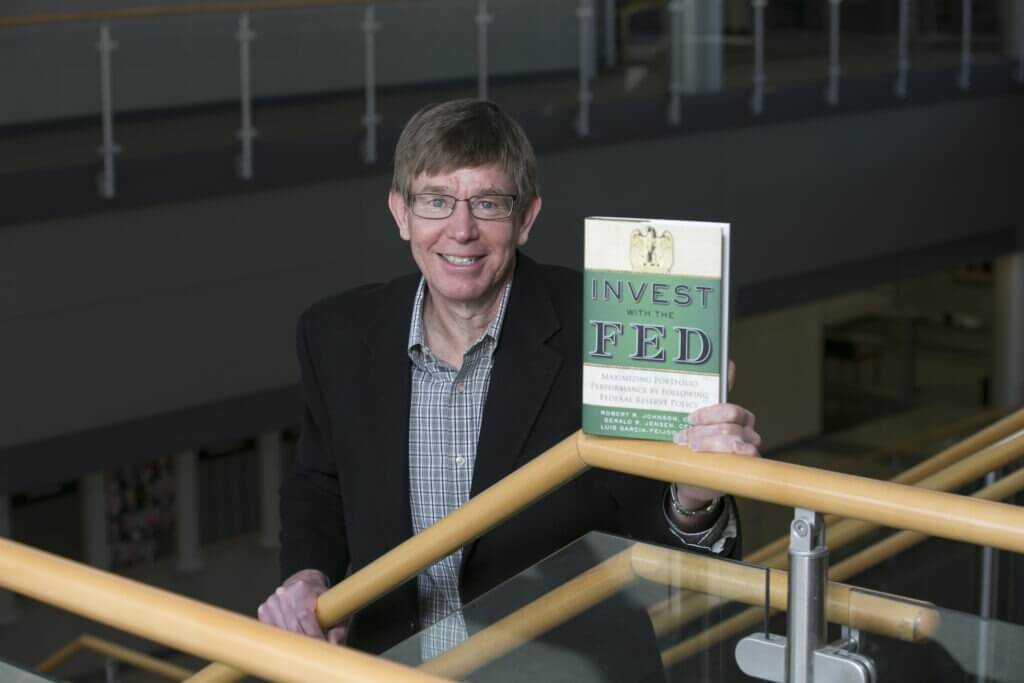While the stock market is trading near all-time highs, many investors are getting antsy, waiting for the moment when the Federal Reserve inevitably begins increasing interest rates after several years of historically low rates.
“Everybody knows that it’s coming, the question is when?” says NIU Professor of Finance Gerald Jensen, an expert in monetary policy and investment management who teaches in the NIU College of Business.
Nobody knows for sure, but Jensen believes he might know where to look for clues. In his book, “Invest with the Fed,” Jensen and his co-authors suggest studying readily available policy rates published by the Fed to anticipate market moves. More importantly they also suggest how to reallocate investments to take advantage of those shifts.
The book was coauthored by Jensen, Robert Johnson, president of the American College of Financial Services and Luis Garcia-Feijoo, a finance professor at Florida Atlantic University.
Retroactively applying the strategy laid out in the book, the authors examined the performance of a hypothetical $10,000 investment between 1970 and 2013. An investor who bought a portfolio that tracked with average market performance would have seen their investment grow to approximately $800,000. Those following the methods outlined by Jensen and his co-authors would be sitting on about $32 million.
“Even when you take into account transaction costs, you still probably come out ahead,” deadpans Jensen, explaining that the method involves shifting a larger portion of a portfolio to particular types of investments that have historically fared better than the market when the Fed raises or lowers interest rates. For instance, he says, during periods of rising Fed policy rates, commodities (oil, industrial metals, agricultural products, etc.) and certain types of real estate fared particularly well. When the Fed signals an easier monetary policy by lowering rates, retailers and companies that build durable goods make more sense.
The book, which was recently featured in the Wall Street Journal, represents the synthesis of about 20 years of research Jensen has done on the relationship between the Fed and the markets. Rather than being presented as a scholarly paper (of which Jensen has published dozens over the years) the information is packaged as an investment guide appropriate for anyone looking to get into the market, not just professionals in the investment industry.
Of course, Jensen and his coauthors are not guaranteeing huge returns on investment. No investing strategy is 100 percent reliable because it is impossible to anticipate everything that can influence the market. Trying to guess at that is particularly difficult at the moment, Jensen says, because the economy is in uncharted waters.
“Short term rates are basically zero, and that is unprecedented and the Fed seems determined to err on the side of caution so as not to squash a fragile recovery,” he points out. “But historically, over the long haul, this approach appears promising.”


